Best Swift Generics Guides to Buy in November 2025
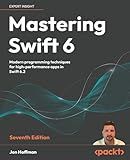
Mastering Swift 6: Modern programming techniques for high-performance apps in Swift 6.2


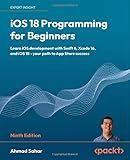
iOS 18 Programming for Beginners: Learn iOS development with Swift 6, Xcode 16, and iOS 18 - your path to App Store success


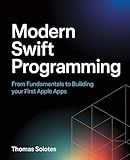
Modern Swift Programming: From Fundamentals to Building Your First Apple Apps


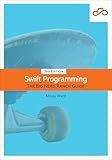
Swift Programming: The Big Nerd Ranch Guide


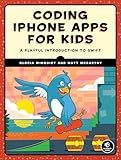
Coding iPhone Apps for Kids: A Playful Introduction to Swift


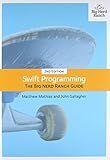
Swift Programming: The Big Nerd Ranch Guide (Big Nerd Ranch Guides)


Generics in Swift allow the creation of flexible and reusable functions, structures, and classes that can work with different types. They enable the definition of generic placeholders within code that can be replaced with specific types when used.
To use generics in Swift, you can start by defining a generic placeholder, typically denoted with the name T, within angle brackets (< >). This placeholder can then be used within function signatures or data structures.
For example, to create a generic function that swaps two values of any type, you can write:
func swapValues(_ a: inout T, _ b: inout T) { let temp = a a = b b = temp }
Here, <T> indicates the use of a generic placeholder, while inout indicates that the parameters are passed by reference and can be mutated.
To call this function with specific types, you don't need to specify the type explicitly as Swift's type inference system can figure it out:
var number1 = 10 var number2 = 20
swapValues(&number1, &number2) // Swaps the values of number1 and number2
Similarly, generics can be used with structures and classes. For instance, you can create a generic stack implementation:
struct Stack { private var elements: [T] = []
mutating func push(\_ element: T) {
elements.append(element)
}
mutating func pop() -> T? {
return elements.popLast()
}
}
Here, Stack<T> denotes the definition of a generic structure. <T> indicates that the stack can work with any type.
You can then create specific instances of this generic stack using different types:
var intStack = Stack() intStack.push(10) intStack.push(20) intStack.push(30)
var stringStack = Stack() stringStack.push("Apple") stringStack.push("Banana") stringStack.push("Cherry")
In summary, using generics in Swift allows you to write flexible and reusable code by defining generic placeholders that can work with different types. This enables the creation of functions, structures, and classes that can be used with a wide variety of data.
How to implement a generic data structure in Swift?
To implement a generic data structure in Swift, you can make use of the language's generics feature. Here's an example of how you can implement a generic stack data structure:
struct Stack { private var array = [T]()
mutating func push(\_ element: T) {
array.append(element)
}
mutating func pop() -> T? {
return array.popLast()
}
func peek() -> T? {
return array.last
}
func isEmpty() -> Bool {
return array.isEmpty
}
}
// Example usage var stack = Stack()
stack.push(1) stack.push(2) stack.push(3)
print(stack.pop()) // Output: Optional(3) print(stack.peek()) // Output: Optional(2) print(stack.isEmpty()) // Output: false
In the above example, the Stack data structure is implemented using a generic type T. This allows you to define stacks of different types, such as Int, String, or custom types. The array property is of type [T] which maintains the elements of the stack. The push() function adds an element to the stack, pop() removes and returns the last element, peek() returns the last element without removing it, and isEmpty() checks if the stack is empty.
How to create a generic protocol in Swift?
To create a generic protocol in Swift, you can follow these steps:
Step 1: Define the protocol using the protocol keyword, and specify the associated type(s) using the associatedtype keyword. These associated types represent the placeholders for the concrete types that will be used when adopting the protocol.
Example:
protocol MyProtocol { associatedtype T associatedtype U
func doSomething(with value: T)
func doAnotherThing(with value: U)
}
Step 2: Implement the protocol in a class, struct, or enum by providing the concrete types for the associated types, along with the required methods.
Example:
struct MyStruct: MyProtocol { typealias T = Int typealias U = String
func doSomething(with value: T) {
print("Doing something with \\(value)")
}
func doAnotherThing(with value: U) {
print("Doing another thing with \\(value)")
}
}
Step 3: Use the adopted protocol with the specific types.
Example:
let myObject = MyStruct()
myObject.doSomething(with: 10) // Output: Doing something with 10 myObject.doAnotherThing(with: "Hello") // Output: Doing another thing with Hello
By using a generic protocol, you can create a protocol that works with multiple types, making your code more flexible and reusable.
How to use generics with associated types in Swift?
To use generics with associated types in Swift, you need to follow the steps below:
Step 1: Define a protocol with an associated type. For example:
protocol Container { associatedtype Item func addItem(item: Item) }
Step 2: Create a generic struct or class that conforms to this protocol. For example:
struct MyContainer: Container { typealias Item = T
var items = \[T\]()
mutating func addItem(item: T) {
items.append(item)
}
}
Step 3: Use the generic type where needed. For example:
let container = MyContainer() container.addItem(item: 5) container.addItem(item: 10) print(container.items) // Output: [5, 10]
In the example above, we defined a protocol called Container with an associated type called Item. Then we created a struct called MyContainer that conforms to the Container protocol and uses the generic type T, which is aliased to the associated type Item. This allows us to use different types of items with the MyContainer struct.
How to extend a generic class in Swift?
To extend a generic class in Swift, you can use the extension keyword along with the necessary type constraints. Here's an example of how to extend a generic class in Swift:
class MyGenericClass { var value: T
init(value: T) {
self.value = value
}
func printValue() {
print("Value: \\(value)")
}
}
extension MyGenericClass where T: Numeric { func doubleValue() -> T { return value + value } }
let intValue = MyGenericClass(value: 5) intValue.printValue() // Output: Value: 5 print(intValue.doubleValue()) // Output: 10
let floatValue = MyGenericClass(value: 2.5) floatValue.printValue() // Output: Value: 2.5 print(floatValue.doubleValue()) // Output: 5.0
In the example above, the MyGenericClass is extended with a condition that the generic type T must conform to the Numeric protocol. The doubleValue() function is then added to the extension, which doubles the value of the generic property value.
